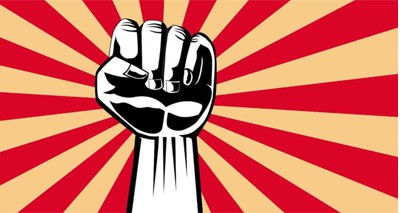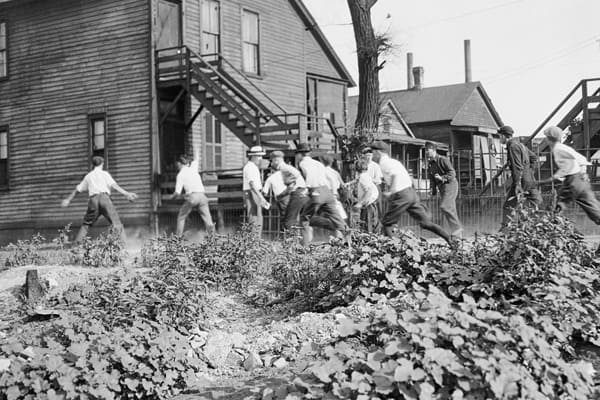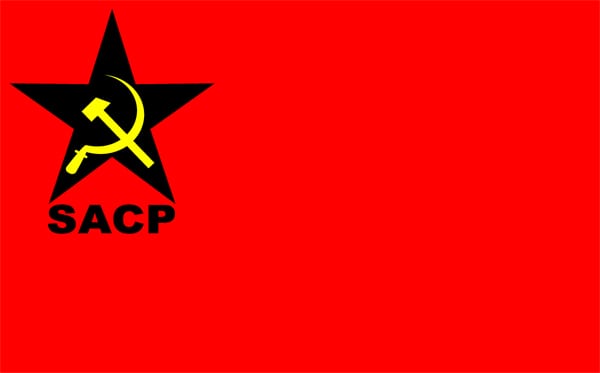When Communists Fought for White Workers
Sinclair Jenkins, American Renaissance, April 29, 2020

World War I shattered Europe and its colonial dependencies. Machine guns, poison gas, and artillery slaughtered millions, and the Spanish Flu of 1918-1919 killed even more. But the Bolshevik Revolution of November 1917 created the greatest threat to the postwar world.
Between 1918 and 1923, revolutions spread across the globe. The Spartacist uprising in Berlin and two socialist revolutions in Bavaria had to be put down with Freikorps militias. Communists enjoyed brief reigns in Hungary, Finland, Estonia, and Ireland’s County Limerick. Even in the United States, which had become an economic giant because of the war, an IWW-led general strike shut down the city of Seattle [1]; and a massive police strike led to three days of bloody rioting in Boston [2].
In the United States, the class warfare was also racial. There were riots in East St. Louis, Illinois, in 1917 when white workers on strike against the Aluminum Ore Company beat and lynched black strikebreakers. White vigilantes murdered at least 40 blacks and burned their homes.
The worst of some 25 race riots during the “Red Summer of 1919” began after blacks on the south side of Chicago blamed a white man when a black teenager drowned at a whites-only beach. About 15 whites and 23 blacks died, and arson left 1,000 black families homeless.

“A victim is stoned and bludgeoned under a corner of a house during the race riots in Chicago.” July 2019. Source.
In South Africa, what is called the Rand Rebellion was a combination of racial and class grievances. According to one historian, this 1922 revolt “was a fundamental moment in the labour history of the country,” and its primary cause “was the fear that white mineworkers would be replaced by black employees” [3]. For much of the conflict, “workers’ violence . . . remained . . . solely between white workers and their employers.” [4]. However, as the rebellion reached its climax, white strikers and militants attacked black workers.
The rebellion began in the gold mines of Witwatersrand (“the Rand”). Shortly before the strike, those mines had enjoyed a “second industrial revolution,” in which scientific management and new techniques of gold extraction meant that already-wealthy mine owners became rulers of mega-corporations [5]. Many were of English ancestry, whereas the mine workers were mostly Afrikaners. White workers, whether Afrikaner or Anglo, were a “labour aristocracy” compared to black workers, who were paid practically nothing [6].
The trigger for the rebellion was the worldwide depression of 1919 that caused the price of gold to drop by 27 percent [7]. Mine owners cut wages. They also lowered the “colored bar” in the Rand, meaning that they encouraged black workers, including some from Portuguese-controlled Mozambique, to work in the mines.
The South African Communist Party (SACP), then led by English immigrant William Andrews, called a strike in the Rand. The SACP and its syndicalist allies had ambitious goals: They wanted regime change in the Transvaal and ultimately a pro-Bolshevik government for the Union of South Africa [8]. The SACP under Andrews openly derided black workers as “kaffirs” who took jobs from whites. This attitude helped to foster an alliance between the SACP and Afrikaner nationalists in the National Party, who saw the rebellion as a fight for the Volk against both rapacious Anglo capitalists and black “scabs” [9].

Flag of the South African Communist Party.
In January 1922, miners in the Rand led a general strike that included electrical unions, engineers, and foundry workers. The following month, during negotiations with the South African Industrial Federation, Communist radicals armed white workers and set up barricades all across the Rand, including in Johannesburg. The next month, in March, Communist-inspired commandos tried to seize mines and attacked Johannesburg itself.
The worst violence was on March 10, 1922, when “Red” commandos managed to seize the town of Brakpan. They beat wounded mine owners and carried out executions with clubs, pistols, and shotguns [10]. Meanwhile, armed workers besieged the police stations at Brixton and Benoni in Johannesburg. In Benoni, some 1,500 rebels shot it out for two days with 183 policemen [11]. On March 11, the Communists ambushed military units: the Transvaal Scottish Regiment and the Imperial Light Horse, which suffered significant losses.
As the rebellion reached its climax in February–March 1922, racial murders became common, as white strikers attacked African workers. During the abortive assault on Johannesburg, whites walked through black neighborhoods such as Sophiatown and fired at passing blacks. At the barricades, Communist and other radical strikers shot at unarmed black civilians. The highest estimate of blacks killed during the rebellion is 40.
Prime Minister Jan Smuts sent in armored cars, machine guns, and airplanes to put down the rebellion. Two hundred people died in the final phase, and thousands were wounded or taken prisoner. Some were executed [12].

1922 Miners strike memorial. “This memorial serves to remember the people who died on the Brakpan mines.” Source.
The defeat of the Rand Rebellion came at a high cost for Smuts and his Union government. In the general election of 1924, J.B.M. Hertzog of the National Party, in coalition with F.H.P. Creswell and the Labour Party, won a decisive victory. This coalition of urban white workers and Afrikaner nationalists passed several laws to separate white and black workers. The Industrial Conciliation Act of 1924, the Wage Act, and the Mines and Works Amendment Act of 1926 all protected white workers with such things as minimum-wage laws and restrictions on black labor in certain industries. This white-labor/Afrikaner-nationalist coalition lasted in one form or another for 14 years.
The Rand Rebellion had echoes well beyond South Africa. In November 1922 in Moscow, at the Fourth Congress of the Third Communist International, there was a debate about white working-class rights. The Comintern declared that, “the enemy of the black race and the enemy of the white worker is one and the same—capitalism and imperialism” [13]. As for South Africa, the Comintern called for a “Native Republic,” a black-dominated South Africa, and for black “liberation.” The Communists called for nothing less than global black “liberation.” “Asiatic and Moslem peoples have awakened the consciousness of millions of blacks,” they claimed, and “American blacks . . . cleared the forests, built the roads, picked the cotton, [and] constructed the railroads” that made America prosperous [14]. Whenever white and black workers fought each other, Communists owed their allegiance to the blacks.
This decision had an immediate impact in South Africa. The SACP went from majority white in 1922 to 91 percent black by 1928 [15]. Its rallying cry became “majority rule” for South Africa, a goal it finally achieved in 1994 after years of international sanctions, racial murders, and revolts.
The lessons of the Rand Rebellion are simple. The white workers of the Rand had legitimate grievances. Our white working people do too, and they deserve a new elite that favors Americanism and nationalist-populist measures of labor protection.
* * *
[1]: Robert K. Murray, Red Scare: A Study in National Hysteria, 1919-1920 (Minneapolis: University of Minnesota Press, 1955): 82.
[2]: Francis Russell, A City in Terror: 1919, The Boston Police Strike (New York: Viking Press, 1975): 128-168.
[3]: Jeremy Krikler, White Rising: The 1922 Insurrection and Racial Killing in South Africa (Manchester and New York: Manchester University Press, 2005): ix.
[4]: Krikler, White Rising, xi.
[5]: Krikler, White Rising, 21.
[6]: Krikler, White Rising, 23.
[7]: “South Africa’s very own Communist Revolution—The Rand Revolt of 1922,” The Observation Post, 15 Oct., 2017.
[8]: Ibid.
[9]: Ibid.
[10]: Krikler, White Rising, 10-11.
[11]: “South Africa’s very own Communist Revolution,” The Observation Post.
[12]: Ibid.
[13]: Fourth Congress of the Communist International, The Black Question, https://www.marxists.org/history/international/comintern/4th-congress/blacks.htm.
[14]: Ibid.
[15]: “South Africa’s very own Communist Revolution,” The Observation Post.















